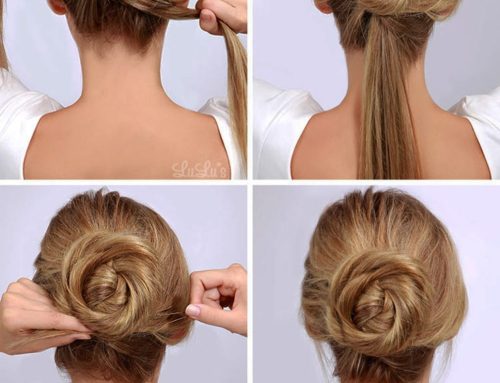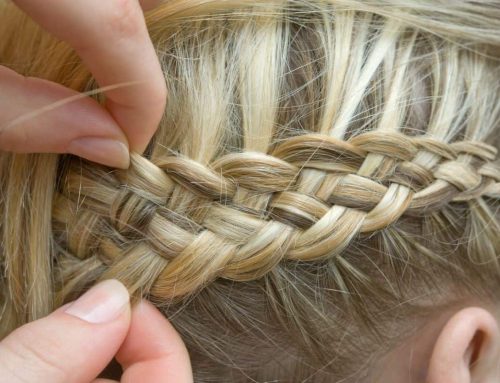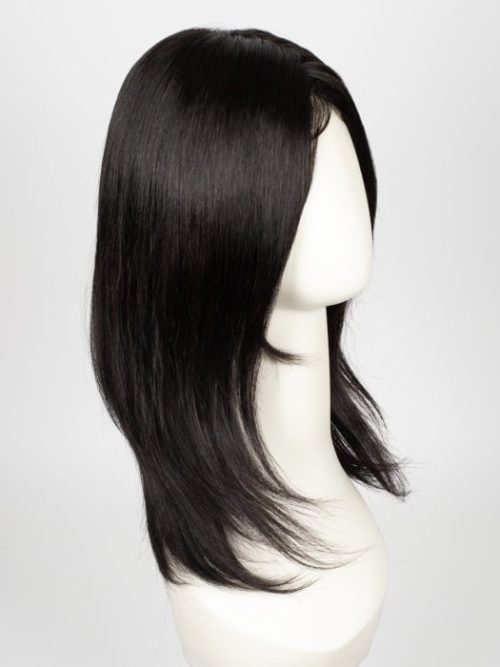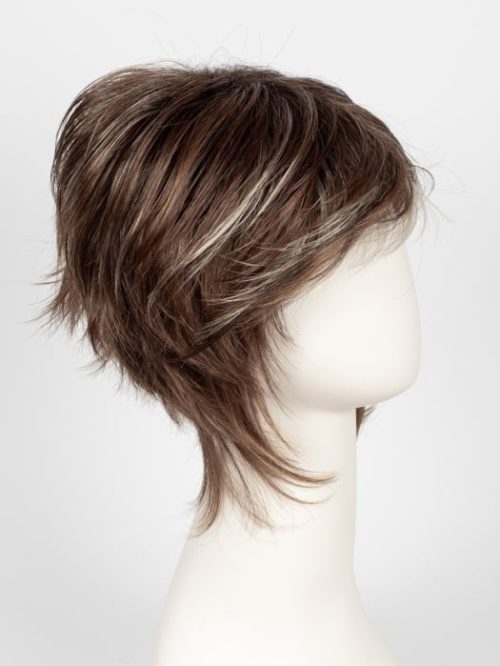Whether you love cosplaying on weekends or wear a wig daily, you’ve probably faced the dreaded tangled wig problem. Don’t throw that tangled mess away! With a bit of patience and some simple tools, you can bring your wig back to life. Today, I’ll walk you through step-by-step instructions on how to untangle both synthetic and human hair wigs, plus share tips to prevent tangles in the first place. Let’s get started!
Things You Should Know
- Finger Comb First: Always start by using your fingers to gently work through larger knots.
- Use the Right Tools: A wide-tooth comb is perfect for removing tangles without damaging your wig.
- DIY Detangler: Mix three parts water with one part wig-safe conditioner for an effective, homemade detangling spray.
- Section Your Wig: Work on small sections from the ends up to the roots for easier detangling.
How to Untangle a Synthetic Wig
Step 1: Place the Wig on a Stand
First, put your wig on a wig stand. This gives you a stable base to work from, making the detangling process much easier. If your wig is long, try placing the stand on a taller object like a tripod for more room to work.
Personal Tip: I once detangled my wig on a table, and it kept slipping. Using a stand or tripod makes a huge difference!
Step 2: Divide the Hair into Sections
Use hair clips to separate the wig into manageable sections. This helps you focus on one area at a time without creating more tangles.
Why It Helps: Working in sections ensures you can tackle knots systematically without overwhelming yourself.
Step 3: Spray with Detangler
Generously spray each section with a synthetic wig detangler. If you don’t have one, make your own by mixing three parts water with one part wig-safe conditioner. This helps to loosen the knots and makes combing easier.
DIY Tip: I often use a mix of water and fabric softener for my synthetic wigs. It works wonders!
Step 4: Finger Comb Larger Knots
Use your fingers to gently loosen large knots. This reduces the strain on the wig fibers and helps remove the most obvious tangles without damage.
Quick Story: I used to yank at my wig with a comb, causing more tangles. Finger combing first saves so much time and stress!
Step 5: Use a Wide-Tooth Comb
Starting from the bottom, gently comb your wig and work your way up to the roots. Hold the hair firmly above where you’re combing to prevent pulling. This process can take a while, but be patient!
Personal Experience: When I first started, I rushed through this step and ended up with more tangles. Taking your time really pays off.
Step 6: Shampoo and Condition
Fill a sink with cool water and add synthetic wig shampoo. Submerge the wig, let it sit, then swirl it around to clean. Rinse thoroughly and repeat with conditioner. Avoid scrubbing to prevent new tangles.
Pro Tip: For particularly damaged wigs, soak in conditioner for 30 minutes to an hour for extra softness.
Step 7: Dry with a Towel
Gently blot your wig with a clean towel. Don’t wring or twist it, as this can cause more tangles. Let it air dry on the wig stand.
Drying Advice: Patience is key here. Rushing this step can undo all your hard detangling work.
Step 8: Style Your Wig
Use brush rollers or your fingers to style the wig. Avoid products like hairspray or heat protectants on synthetic wigs, as they can deteriorate the fibers.
Styling Tip: For a quick fix, sometimes shaking the wig can help it settle into a nice style without much effort.
How to Untangle a Human Hair Wig
Step 1: Place Your Wig on a Styling Head
Mount the wig head onto a tripod or tall object. This setup makes it easier to work on long wigs. If you don’t have a styling head, lay the wig on a table.
Why It’s Important: Stability is crucial for effectively detangling without causing more knots.
Step 2: Clip the Hair into Sections
Separate the wig into manageable sections using hair clips. This reduces tension and helps you focus on particularly tangled areas.
Personal Story: When I started using sections, detangling became much more manageable and less stressful.
Step 3: Finger Comb Larger Knots
Gently separate larger knots with your fingers. This initial step helps remove big tangles and makes combing easier.
Quick Tip: Finger combing can prevent the wig fibers from breaking, which is especially important for human hair wigs.
Step 4: Spray with Conditioner Mixture
Fill a spray bottle with three parts water and one part wig-safe conditioner. Shake well and apply generously to each section until the wig is saturated.
DIY Tip: I prefer using a leave-in conditioner for extra smoothness and ease of combing.
Step 5: Use a Wide-Tooth Comb
Starting from the tips, gently comb your way up to the roots. Hold the hair firmly above where you’re combing to avoid pulling. Work in small sections if the wig is very tangled.
Experience: The first time I tried this, it took forever. But with patience and practice, it gets easier and faster.
Step 6: Shampoo and Condition
Fill a sink with lukewarm water and add human hair wig shampoo. Soak and swirl the wig, then rinse with cool water. Repeat with conditioner, being careful not to apply too close to the base.
Washing Tip: Turn the wig inside out to ensure the shampoo reaches the cap where most dirt and oils accumulate.
Step 7: Dry with a Soft Towel
Blot the wig gently with a towel or soft T-shirt to remove excess water. Avoid rubbing or wringing to prevent tangles. Let it air dry on the wig stand.
Personal Tip: I use a soft T-shirt because it’s gentler on the wig and helps prevent frizz.
Step 8: Style Your Wig
Once dry, style your wig with your fingers or a curling iron set on low. Use a heat protectant and be careful not to overdo it.
Styling Story: I once burnt a section of my wig using high heat. Since then, I always use low settings and a heat protectant.
How to Prevent Wigs from Tangling
Step 1: Don’t Sleep in Your Wig
Sleeping in your wig causes friction with pillows and blankets, creating tangles. Always take your wig off before bed.
Sleep Tip: If you must sleep in your wig, use a satin or silk pillowcase to reduce friction.
Step 2: Store Your Wig Properly
Store your wig in its original packaging or on a wig stand to prevent tangles from forming.
Storage Hack: If you’ve lost the original packaging, use a netted wig cap to store your wig.
Step 3: Use Gentle Products
Opt for natural products without harsh chemicals like sulfates. Use a moisturizing conditioner to keep your wig hydrated.
Product Tip: Unlike natural hair, wigs don’t produce their own oils, so they need extra hydration to stay smooth and tangle-free.
Step 4: Avoid Excessive Heat Styling
Heat damages wig fibers, making them more prone to tangling. Use heat protectant sprays and be cautious with styling tools.
Personal Experience: I limit heat styling to special occasions to keep my wigs looking fresh and tangle-free.
Step 5: Wash Your Wig Regularly
Wash your wig after about 21 wears to maintain its cleanliness and prevent tangles. Washing too frequently can dry out the fibers.
Washing Schedule: If you don’t wear your wig daily, you can go longer between washes.
Step 6: Invest in a High-Quality Human Hair Wig
While more expensive, high-quality human hair wigs tangle less and last longer. Look for wigs with cuticles facing the same direction for smoother texture.
Buying Advice: Straight wigs are generally easier to maintain and less prone to tangling than curly ones.
Conclusion
Detangling and caring for your wig doesn’t have to be a daunting task. With the right tools and techniques, you can keep your wig looking beautiful and feeling comfortable. Remember, patience and gentle handling are key. So next time your wig gets tangled, don’t stress—just follow these steps and bring it back to life. Happy wig styling!




